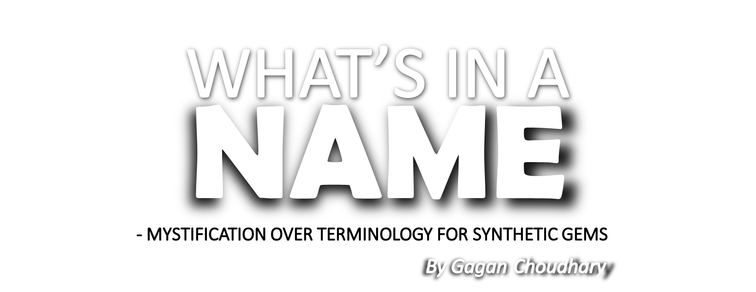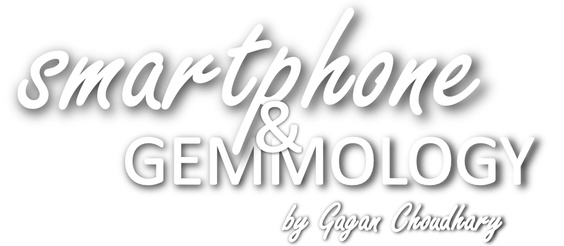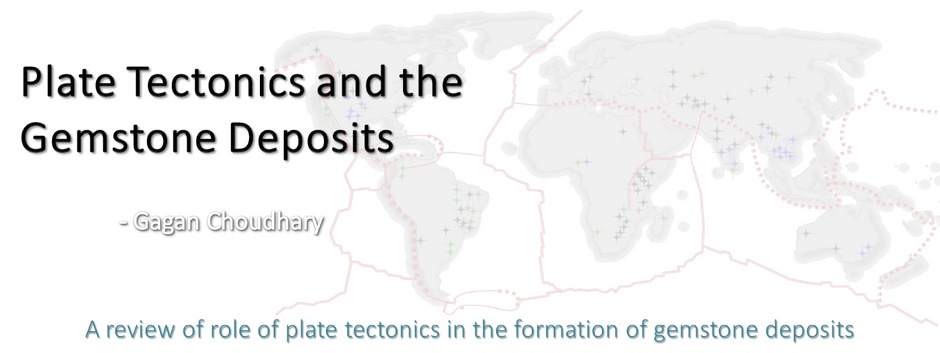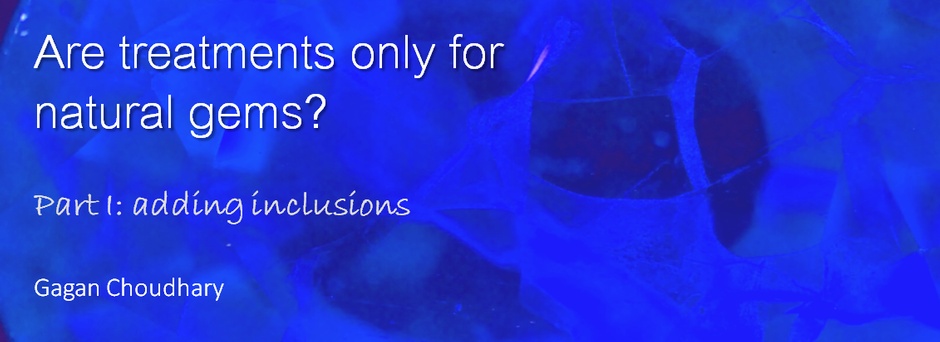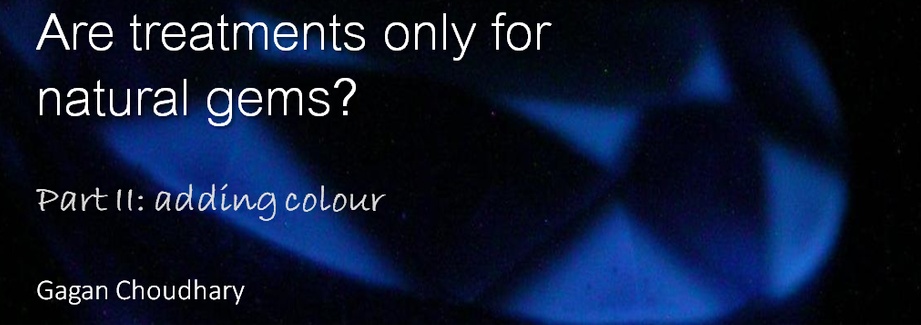Glass-filled yellow sapphire
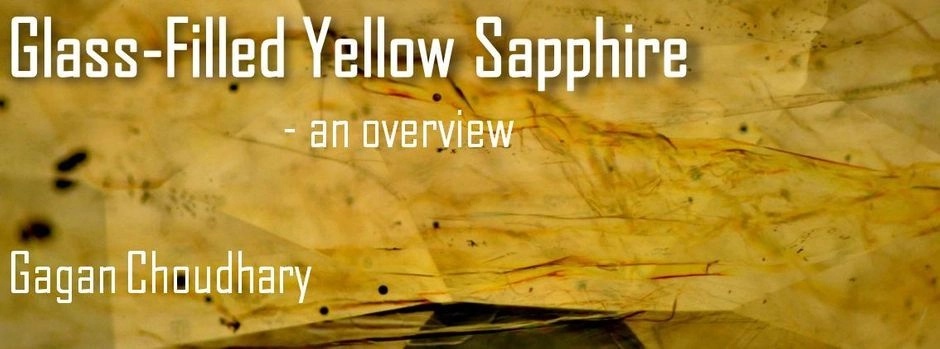
Glass-Filled Yellow Sapphire – an overview
by Gagan Choudhary
Due to the extensive popularity of glass-filled rubies, experiments have been conducted on various other colours of corundum too, but they could not get so much popularity. However, glass-filling in blue sapphires using cobalt, imparting blue colour to the otherwise white or colourless corundum, introduced in the year 2012 (e.g. Leelawatanasuk et al, 2013), has become very popular. Complete disclosure although remained a concern. While there are reports of glass-filling on other colours of corundum, such as colour changing (Choudhary, 2008) and green (York, 2013), an orangy yellow sapphire (4.27 ct) filled with lead-glass was presented to him by Dheeraj Gupta of Gem & Jewellery Sales Promotion Centre, New Delhi.
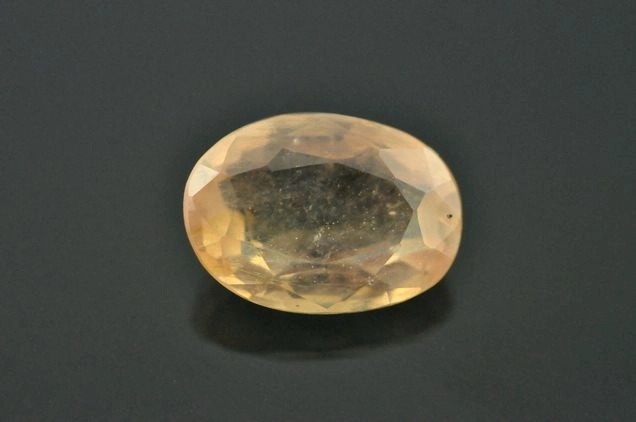
Description
The 4.27 ct sapphire (figure 1) was hazy throughout, with a roiled effect reminiscent of hessonite, but standard gemological properties and microscopic analysis identified the specimen as natural corundum. The specimen gave an RI of 1.762–1.770; a hydrostatic SG of 4.03; an absorption band at around 450 nm, along with fine lines in the red end under desk model spectroscope; and reddish orange fluorescence in long- and short-wave UV. The sapphire showed stronger fluorescence under long-wave than short-wave. The SG value was slightly on the higher side but within the limits of corundum.
Microscopic Features
Microscopic examination is one of the most reliable methods for identification of glass-filling in corundum. It revealed numerous low-relief cracks throughout the stone with a distinct flash effect, associated with a filler of similar refractive index to that of the host (figure 2); also visible were trapped, flattened gas bubbles, as seen in figures 3 and 4, and whitish cloudy patches. These are typically associated with filled stones. Under diffused lighting, the glass-filled fractures appeared orangy yellow against the pale yellow bodycolour of the stone (again, see figures 3 and 4). As a result, the face-up colour also appeared orangy yellow. The colour of the filler glass was similar to that observed in glass-filled rubies. Also present were milky zones consisting of fine discs (usually rutile) and negative crystals associated with liquid films (figure 5).

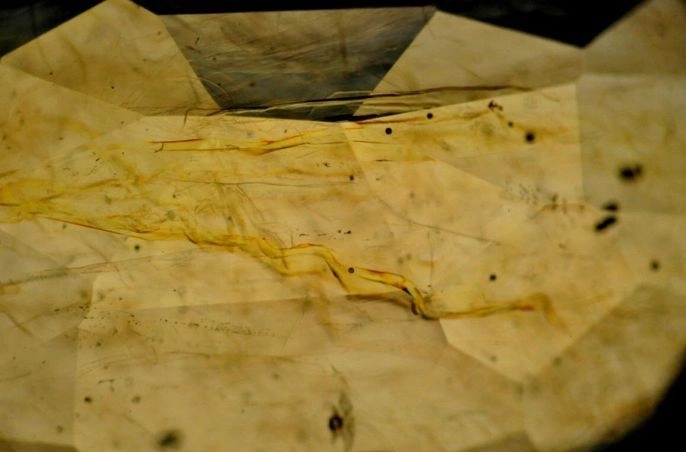
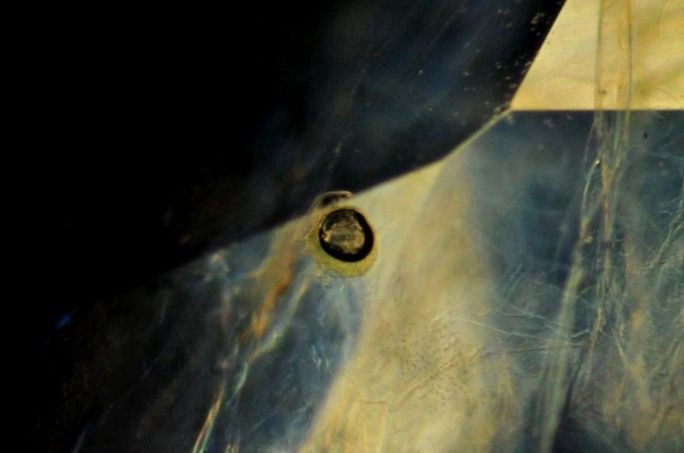
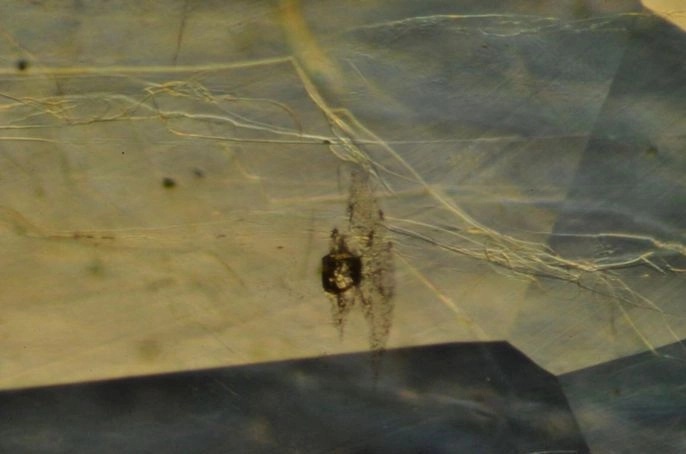
Analyses
The lead content of the glass was further confirmed by EDXRF analysis, while the presence of iron was confirmed by a Fe-related 450 nm band by UV-visible spectroscopy (figure 6). DiamondView typically displayed blue-green fluorescence of the glass-filler, similar to that seen in glass-filled rubies and other colours of corundum.
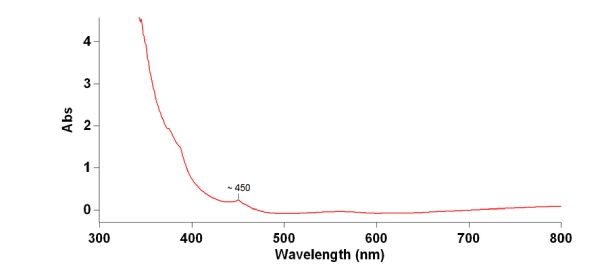
Conclusion
Since this was first example of lead-glass-filled yellow sapphire examined by this author, its market penetration is still unknown, but there have been anonymous reports of larger packets being circulating in the market. With its transparency and colour, this material qualifies as an inexpensive substitute for yellow sapphire, provided there is complete disclosure.
References
Choudhary G. (2008) Lead glass-filled color-change sapphire, Gems & Gemology, Vol. 44, No. 1, pp 88 -89
Choudhary G. (2014) Yellow sapphire filled with lead glass. Gems & Gemology, Vol. 50, No. 1, pp 92-93
Leelawatanasuk T., Atitchat W., Pisutha-Arnond V., Wattanakul P., Ounorn P, Manorotkul W, & Hughes R.W. (2013) Cobalt-doped glass-filled sapphire: an update. Australian Gemmologist, Vol. 25, No. 1, pp 14–20
York P. (2013) Green sapphire with lead-glass. Gems & Gemology, Vol. 49, No. 3, pp 176
All photographs and photomicrographs by G. Choudhary
Visit us at Online Courses to know more.
Visit us at Online Courses to know more.
Visit us at Online Admissions Open
Call Us On +91 8879026633 / 7400497744 / 022-42906666 Courses to know more.
trending post


